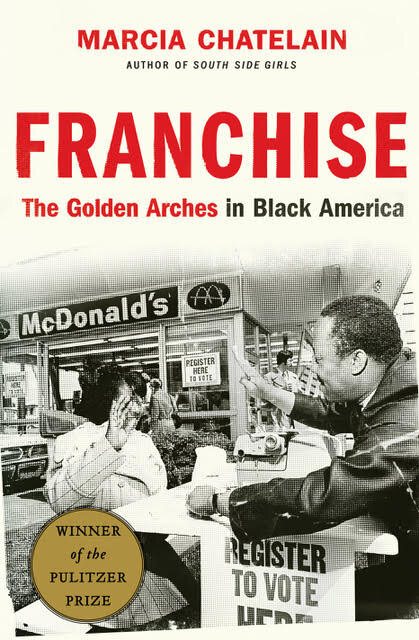“On a crisp February morning, I joined my co-hosts and producer of the podcast ‘Undisclosed: The Killing of Freddie Gray’ for a visit to Gilmor Homes in Baltimore, where Gray was arrested and thrown in the back of a police vehicle in 2015…”
Read MorePublished in the Chronicle of Higher Education. “I ask that we no longer blame ignorance for where we are, and instead we depend on the impulse that brought us to teaching and research — the belief in inquiry, revision, and tenacity to come closer to enduring solutions. The stakes are far too high, and the lives of our students far too precious, to avoid a moral accounting of who we are in the classroom.”
Read More“The Smithsonian Institution's new National Museum of African American History and Culture (NMAAHC) takes visitors on a spellbinding journey through the African American past and present.”
Read MoreIn a time when academic activists like Kimbele Crenshaw are challenging the invisibility of girls of color in conversations about police brutality and educational disparities through the #SayHerName campaign, new work on the history of black girlhood demonstrates creative ways of disrupting these inaccurate, dominant narratives.
Read MoreMonique W. Morris, co-founder of the National Black Women’s Justice Institute, has spent years listening to the black girls behind the statistics and concludes that the arrests and detentions often worsen the social, educational and economic struggles of an already vulnerable group. Read my review of her book “Pushout.”
Read MoreWhen does a moment become a movement? Is it in when the wails of grief over a person gunned down by police or a neighborhood vigilante become a rallying cry for change?
Read MoreThis article is part of a forum on “Free Speech on Campus.” To read contributions by David A. Bell, Jim Sleeper, and Anne-Laure White, click here.
I’ve never been into children’s books.
Even when I fell squarely in that all-important 8-to-11-year-old demographic, I didn’t care too much for enterprising babysitters, dystopian futures, or strange happenings in the old schoolhouse. For my beloved sustained silent reading time at school, I brought unauthorized biographies of Elizabeth Taylor and Hillary Clinton from home. I don’t know if my early reading habits were particularly wholesome, but I realize now that I was attracted to more grown-up books because I didn’t like that so-called girls’ books always had a standard exposition and pat conclusion. Even the somewhat edgier Nancy Drew series delivered the same ending every time: Nancy never failed to decipher the mystery by winding an antique clock or tapping a fake bookshelf. The cynicism that serves me well as a historian today was nursed on the stuff I believed that adults read. I enjoyed reading about real-life challenges—dramatic accidents, lost fortunes, and divorces from Richard Burton.
Continue reading: http://tinyurl.com/hpydjvp
Read MoreA reflective essay on being an undergraduate at the University of Missouri-Columbia.
Read MoreThe women of Black Lives Matter are not bending to the demands of respectability politics. They are carving out space for black women to fight for justice. Read my discussion with Kaayya Asoka on women and the #BlackLivesMatter movement in Dissent Magazine.
Read More"After poring through Chicago Defender newspaper articles about Oececa patriotic revues, mimeographed reports on the cabin funds, and brief news features lauding Camp Fire standouts like Ruth Reese and Lenora Grady, I realized just how radical black participation in children’s organizations was for the time…”
Read MoreThe #FergusonSyllabus has organized a disparate population of scholars and students into a virtual movement using Ferguson to frame how struggle has shaped American history. Read about my work asking professors who used Twitter to talk about Ferguson and to use #FergusonSyllabus to recommend texts, collaborate on conversation starters, and inspire dialogue about some aspect of the Ferguson crisis.
Read MoreThis review appeared in Perspectives on History, September 2014.
Read MoreIn my Spring 2014 article," International Sisterhood: Cold War Girl Scouts Encounter the World" in Diplomatic History, (2014) 38 (2):261-270, I present research on Girl Scouts and the Cold War.
Read More"As a historian of girls and girlhood in America, I am never surprised by the bizarre and sexist lies that circulate around any group or movement devoted to elevating the status of girls and young women. Unlike the Camp Fire Girls and some areas of the the YWCA, who have since changed their focus from serving only girls, Girl Scouts remains a powerful organization devoted to highlighting and celebrating what girls can do in their communities and the world….”
Read MoreThis article examines African-American women's outreach to girls in Chicago during the Great Migration period. I argue that Black women's vocational guidance outreach was not only a means of helping girls but also asserting women's professional identities.
Read MoreA biographical essay on Amanda Berry Smith, an African Methodist Episcopal Church missionary, who founded the first orphanage for African-American children in Illinois. The orphanage became the Amanda Smith Industrial School for Girls.
Read More
